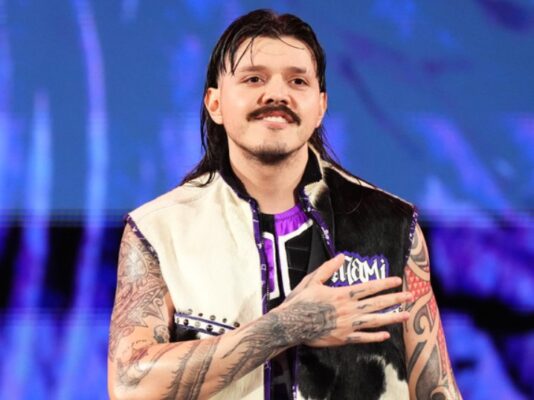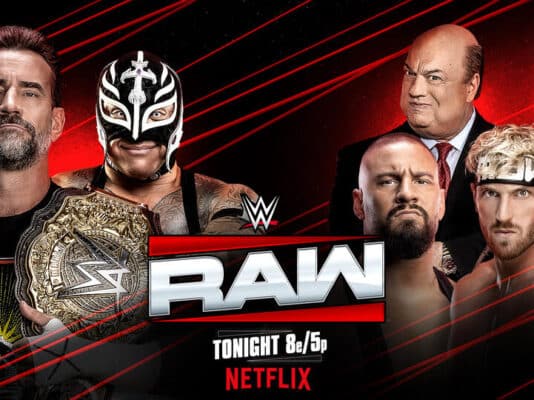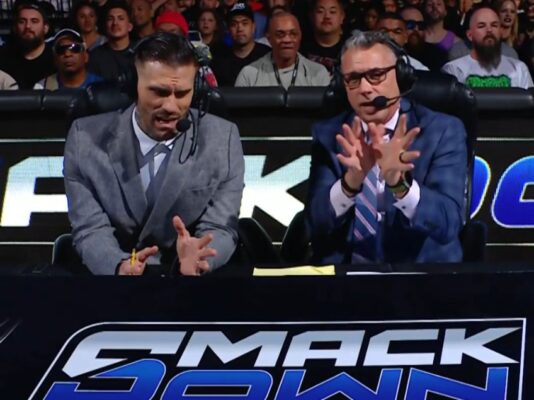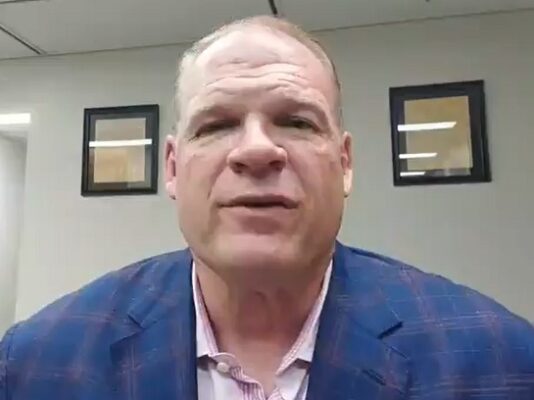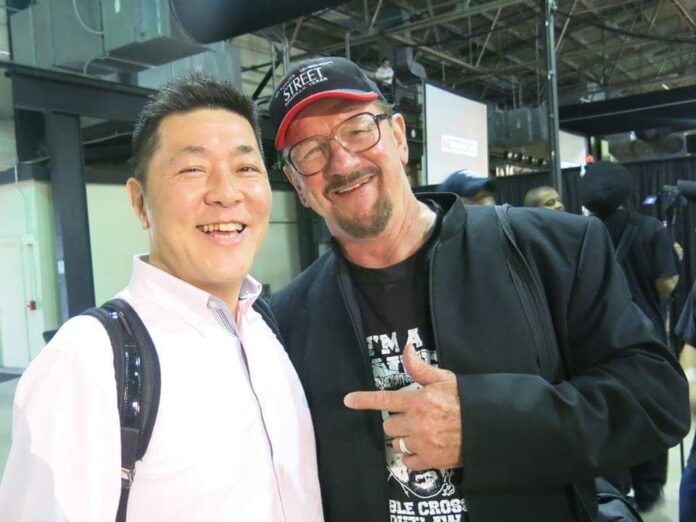
Over forty years ago, Fumi Saito was a foreign exchange student in the United States, as he went on an “excursion” to the AWA territory to complete high school at Robbinsdale Cooper, a journey he was prompted to take because of the passion he developed for the sport of professional wrestling from the time that he was just three years old. At a time when the legendary Giant Baba and Antonio Inoki were a famous tag team in the JWA, a group founded by the iconic Rikidozan, Fumi sat on the floor in front of the television at his grand parents’ house to watch the spectacle of the grappling arts beamed through the screen. The small black and white TV drew not only Fumi’s family, but their neighbors were welcomed to watch the in-ring battles in a prime time television slot. Fumi followed American wrestling through the magazines in his native country, leading him to want to explore the United States when he had the opportunity as an exchange student. As a sociology major, he was able to stay in the United States to attend college at Augsburg University in Minneapolis, similar to how he saw some of his wrestling heroes travel to America to earn their higher education in professional wrestling. The difference was that Fumi hit the books instead of the mat like Jumbo Tsuruta and Genichiro Tenryu.
Fumi didn’t know it at the time, but his stay in America opened the door for what became not only his career for the past four decades, but would also solidify him as the most prolific Japanese wrestling journalist in the history of the industry. During his tenure in America, he contacted a magazine editor in Japan, offering to send results and stories from the territory. From there, Saito got noticed around the wrestling arenas and was offered the chance to work as a ringside photographer, with his first card that featured Verne Gagne vs. Nick Bockwinkel in the main event in 1981.
“I’m sure I looked ridiculous, right?” recalled Fumi when he thought of the time that he introduced himself at the arena when he was just 19.
Fumi consistently airmailed his results, stories, and photographs back to Japan, which had a thriving sports journalism culture. There were at least five weekly publications that covered pro wrestling alongside baseball at any given time during that era. How much of the action was or wasn’t scripted inside the ring ropes wasn’t a concern, professional wrestling was a fixture of the sports pages in Tokyo, and the status of the stars that were covered in the printed pages reflected that. Pro wrestlers, including the “gaijin” or foreign competitors were as popular as athletes from other sports in Japan.
“Weekly Pro Wrestling, our magazine, had three photographers in America. One in New York, one in Orlando, Florida and one in St. Louis all basically working full-time for us, sending photos from NWA areas, and New York area. I was doing that from AWA, but I came home to work for the weekly publications. I got a lot of assignments,” Saito explained.
Those early international reports opened the door for a career that spanned decades, as Fumi wrote for weekly publications for more than thirty years before he transitioned to a freelance writer of books and in more recent years, a well-known podcaster.
He interviewed some of the most legendary and iconic names in the history of the sport. Fumi has sat across from Hulk Hogan, The Road Warriors, Jesse Ventura, Adrian Adonis, The Dynamite Kid, Bruiser Brody, Stan Hansen, Terry Funk, and many others.
But, when I had the chance to talk with Fumi for this piece, as he sipped on some tea on a Wednesday morning in Shibuya, while I organized a short list of questions in Pittsburgh on a Tuesday night, you wouldn’t get the impression that Saito is one of the most accomplished figures in his field.
If I had to describe Fumi Saito with only one word, despite all of his professional accomplishments, humble would be the term that suits him best. As mentioned, the 62-year-old writer has spent the better part of 40 years around or reporting on iconic names in the industry, but he doesn’t give himself that credit, and won’t accept praise easily. In fact, during the more than 90 minutes that I had the chance to speak with him, he was much more eager to detail the history of the organizations he covered than talk about himself. For Saito, he was simply doing his job and was grateful to get a chance to be able to make a living from the passion that he had for the sport since the time he that sat in front of that small TV at his grandparents’ house.
“Friday night at 8 was Inoki’s New Japan Pro Wrestling on TV Asahi. Saturday night was Giant Baba’s All Japan Pro Wrestling on Nippon TV. Basically, Baba vs. Abdullah The Butcher all year long, and Inoki vs. Tiger Jeet Singh all year long,” Fumi recounted of the Japanese wrestling scene of his youth.
But, as dedicated and as passionate as he was about his profession, the demanding schedule of writing for weekly publications, with their tight deadlines when covering live cards, began to wear on the veteran journalist until a health scare in 2007 gave him a different prospective on his life’s work.
“Week in and week out, year after year, and decade after decade, you know? It consumes you because there’s a five day turn around with the magazine every week all year long. I almost lost it a couple times. Am I having a good time? Do I like wrestling? But, I love it so much, as a kid I dream about going to all the shows. You sit in the press box and watch all these important wrestling matches. You write about it and people read about it, there’s some satisfaction in there. It’s a lot of work, a few nights a week, you don’t go home, you stay at the editor’s room and write it,” Fumi explained.
Fumi was diagnosed with stomach cancer in 2007, and as a part of his decision to limit the stress that went along with weekly outlets, he decided to become a freelance writer on his own, authoring over 20 books in the years since. After he beat cancer, Saito wanted to broaden his education as well, earning his Master’s degree in Sociology in the years that followed. Fumi is currently still involved in higher education today, as he teaches Sociology courses at universities on Thursdays.
Fumi’s contributions to the professional wrestling industry expand beyond the written word, as over the years, he was involved in several different media projects, including as a producer for the story mode of the wildly popular Fire Pro Wrestling video game. Fumi also learned video and television production throughout the 80s and 90s, opening the door for a slew of productions, including when he directed a documentary called “Kamisama” about his wrestling hero, Karl Gotch. Saito also worked as the color commentator on the official All Japan Women’s Pro Wrestling video series throughout the 90s. He even once had a cameo in the intro an episode of ECW Hardcore TV when the Philadelphia-based group toured Japan.
“I had done over 200 volumes of Japanese production of WWE, WCW, and ECW official VHS video series with my Japanese voice over. I continued on the WWE Japanese voice over on DAZN live streaming as late as 2021,” said Saito
Ironically, it was these type of media projects outside of the written publications that gave Saito world-wide recognition in more recent years. It wasn’t until Fumi teamed up with Jim Valley, dubbed “The King of Recovery” that overcame his own health challenges a few years ago, for a podcast on The Wrestling Observer website that more western fans were introduced to the czar of Japanese wrestling journalists. When Fumi isn’t on the podcast with Valley, he has another podcast, “Write That Down” with Justin Knipper.
“The internet changed everything,” Saito commented.
Fumi’s friendship with The Wrestling Observer’s Dave Meltzer spans back a few decades when the two would make international phone calls to get the scoop on the happenings of the sport before the fax machine made communication much easier.
“I met Dave Meltzer right from the beginning, we were both young, I’m talking 40 years ago. The Observer was never marketed to be a commercial product, it was never intended to be for the general public consumption. It was always meant for insider knowledge. Before cell phones or e mail, the international overseas phone call was really, really expensive, but when I wanted to know about the latest things in America, I’d call him. When he wanted to know about Japan, we’d make conversation for hours. We helped each other,” Fumi explained.
“From 1985 on, we both got fax so we’d fax each other memos, but that was real quick, you know? The fax was like the greatest invention,” Saito added with a laugh.
Thankfully, modern technology allows for Valley and Saito to broadcast “Pacific Rim,” the podcast dedicated to the Japanese portion of the industry, live on various platforms. Aside from the podcast today, Fumi Saito continues to work on new books on a regular basis and his series of publications, many that focus on the history of the sport in his country, are considered some of the most detailed resources available anywhere.
“Fumi isn’t only Japan’s leading pro wrestling author, reporter and historian, he’s also my dear friend. Thanks to Fumi I’ve called Stardom on PPV, sang karaoke with Bull Nakano and spent New Years Eve with Killer Khan at his restaurant. Fumi’s goal was to educate the next generation of fans. Whenever I go out to wrestling, I can count on at least one person mentioning how much they’ve learned from Pacific Rim. So I’d say he has and continues to accomplish his goal,” said Jim Valley.
He plans to continue to teach, work on his book projects, and tag team the podcast scene with Jim Valley, and Justin Knipper online.
Aside from humble, the other adjectives that came to mind right after I concluded the call with Fumi were kind and dedicated. He might not want the credit, but it’s unquestionable that Fumi Saito resume that very few other wrestling journalists have, and his tirelessly dedication to professional wrestling over the past 40 years quietly created the most decorated career of a wrestling reporter in Japan.
“It’s not about me, but consider myself very lucky that I was so involved early on and I was able to make a career out of this. I’m very humbled and I still love wrestling,” Fumi concluded.
For me information about Fumi, you can go to https://www.facebook.com/fumi.saito1
What do you think? Share your thoughts, opinions, feedback, and anything else that was raised on Twitter @PWMania and Facebook.com/PWMania.
Until next week
-Jim LaMotta
E mail [email protected] | You can follow me on Instagram, Facebook, & Threads @jimlamotta89







